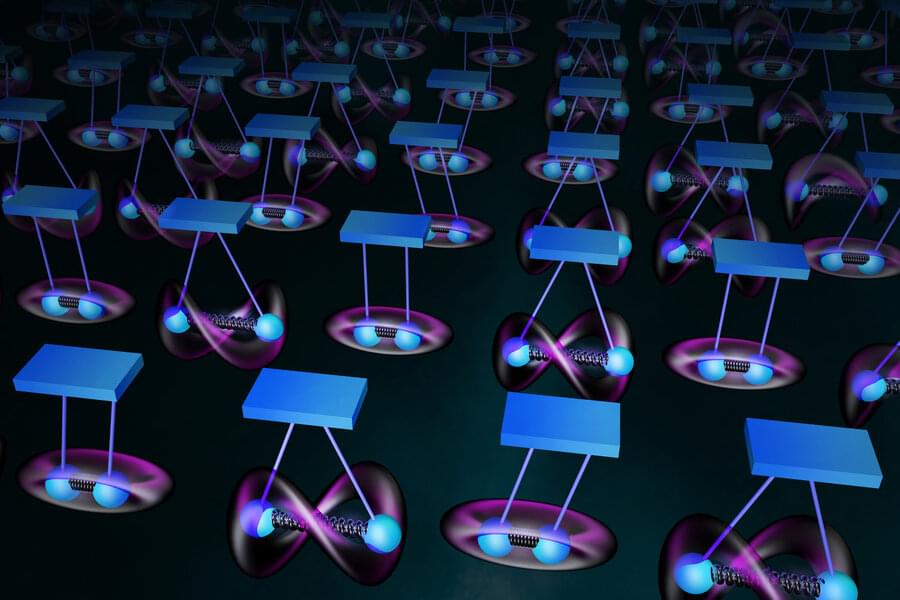The team was able to maintain this state of superposition among hundreds of vibrating pairs of fermions. In so doing, they achieved a new “quantum register,” or system of qubits, that appears to be robust over relatively long periods of time. The discovery, published today in the journal Nature, demonstrates that such wobbly qubits could be a promising foundation for future quantum computers.
New qubits stay in “superposition” for up to 10 seconds, and could make a promising foundation for quantum computers.
Caption: quibits graphic.
Credits: Credit: Sampson Wilcox/RLE
MIT physicists have discovered a new quantum bit, or “qubit,” in the form of vibrating pairs of atoms known as fermions. They found that when pairs of fermions are chilled and trapped in an optical lattice, the particles can exist simultaneously in two states — a weird quantum phenomenon known as superposition. In this case, the atoms held a superposition of two vibrational states, in which the pair wobbled against each other while also swinging in sync, at the same time.








